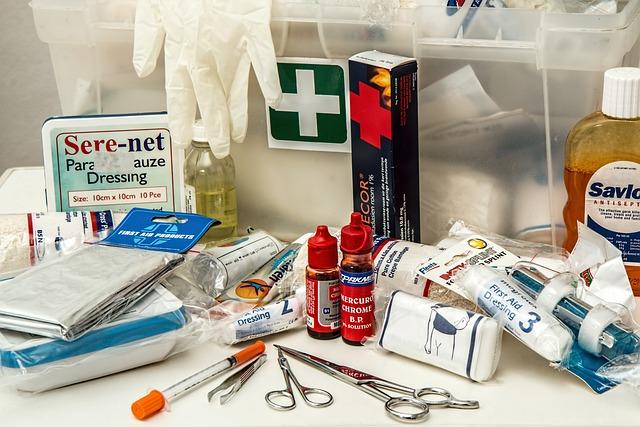When it comes to our beloved canine companions, ensuring their safety is always a top priority. As curious explorers, dogs often find themselves in environments where they might encounter snakes, particularly during warmer months when these reptiles are more active. While the thought of a snake bite can be frightening, there are proactive steps you can take to minimize the risk and protect your furry friend. In this guide, we’ll walk you through essential tips and strategies to safeguard your dog from snake bites, empowering you with the knowledge to keep your pet safe while still allowing them the freedom to enjoy the great outdoors. With a little preparation and awareness, you can help ensure that your adventures together remain both exciting and secure.
Understanding Snake Behavior and Identifying Common Snake Habitats
Understanding the nuances of snake behavior is essential for safeguarding your furry friend. Snakes are generally reclusive creatures, preferring to avoid confrontation. They are most active during warmer months and often hunt during early morning or late afternoon. Recognizing their behavior patterns can help in predicting potential encounters. For instance, snakes are drawn to environments that offer both food and shelter. Therefore, areas with dense undergrowth, rock piles, or tall grass can become potential snake hotspots.
Identifying common snake habitats is crucial for prevention. Be on the lookout for the following environments where snakes may reside:
- Woodpiles and Brush Heaps: These provide excellent hiding spots and are often home to rodents, a primary food source for snakes.
- Water Sources: Snakes are often found near ponds, streams, or any standing water, especially during dry spells.
- Rocky Areas: Rocks offer warmth and cover, making them ideal basking and nesting sites.
- Garden Beds: Mulch and compost heaps can attract snakes due to the warmth and insects they provide.
By being aware of these habitats and behaviors, you can take proactive steps to keep your dog away from potential danger zones, ensuring a safer outdoor experience for your beloved pet.

Essential First Aid Steps if Your Dog is Bitten
In the unfortunate event that your furry friend encounters a snake and gets bitten, it’s crucial to act swiftly and calmly. First, ensure your own safety by moving both yourself and your dog away from the snake. Once you’re in a safe location, follow these essential steps:
- Stay Calm: Dogs can sense your anxiety, which might elevate their stress levels. Speak softly and maintain a soothing demeanor.
- Keep Your Dog Still: Movement can cause the venom to spread more quickly through the body. Encourage your dog to lie down and remain as still as possible.
- Identify the Snake: If possible, take note of the snake’s color and markings from a safe distance. This information can be helpful for the veterinarian.
- Avoid the Bite Area: Do not attempt to suck out the venom or cut the bite wound. These actions can cause more harm than good.
- Seek Veterinary Care Immediately: Time is of the essence. Contact your vet or an emergency animal hospital to inform them of the situation and head there promptly.
By following these steps, you can provide critical care to your dog and increase their chances of recovery while waiting for professional veterinary assistance.

Training Your Dog to Avoid Snakes and Dangerous Areas
Training your furry friend to steer clear of snakes and other perilous areas is crucial for their safety. Start by teaching basic commands like “leave it” and “come” to ensure they respond promptly in risky situations. Reinforce these commands with positive reinforcement such as treats or praise to make them more effective. Regular practice in a controlled environment will build your dog’s confidence and responsiveness.
- Introduce snake-like objects during training to familiarize them with the shape and smell.
- Use leashes or long leads during hikes to maintain control and prevent them from wandering into danger zones.
- Encourage your dog to walk on designated paths and avoid bushy or rocky areas where snakes might lurk.
Consider enrolling your dog in a specialized snake avoidance training course, where professionals use safe, humane methods to teach them to recognize and avoid snakes. This not only enhances their survival instincts but also gives you peace of mind during outdoor adventures. Remember, consistency is key—practice these techniques regularly to keep your beloved pet safe.

Choosing the Right Protective Gear for Your Dog
When venturing into snake-prone areas, equipping your dog with the right protective gear is crucial. Snake bite-proof vests are a popular choice, designed to shield your dog’s vital organs from venomous bites. These vests are typically made from durable materials such as Kevlar or Cordura, offering a lightweight yet robust barrier. Look for vests that provide coverage from neck to belly, ensuring maximum protection without hindering movement.
- Boots or Paw Protectors: Protects paws from bites and rugged terrain.
- Bright-colored Bandanas or Collars: Increases visibility and can deter snakes.
- GPS Tracker: Ensures you can locate your dog quickly in case of an emergency.
Beyond physical gear, training and awareness are your first line of defense. Teach your dog to avoid snakes by recognizing their scent and sound. Combining the right gear with proper training will significantly reduce the risk of a snake encounter turning dangerous.

